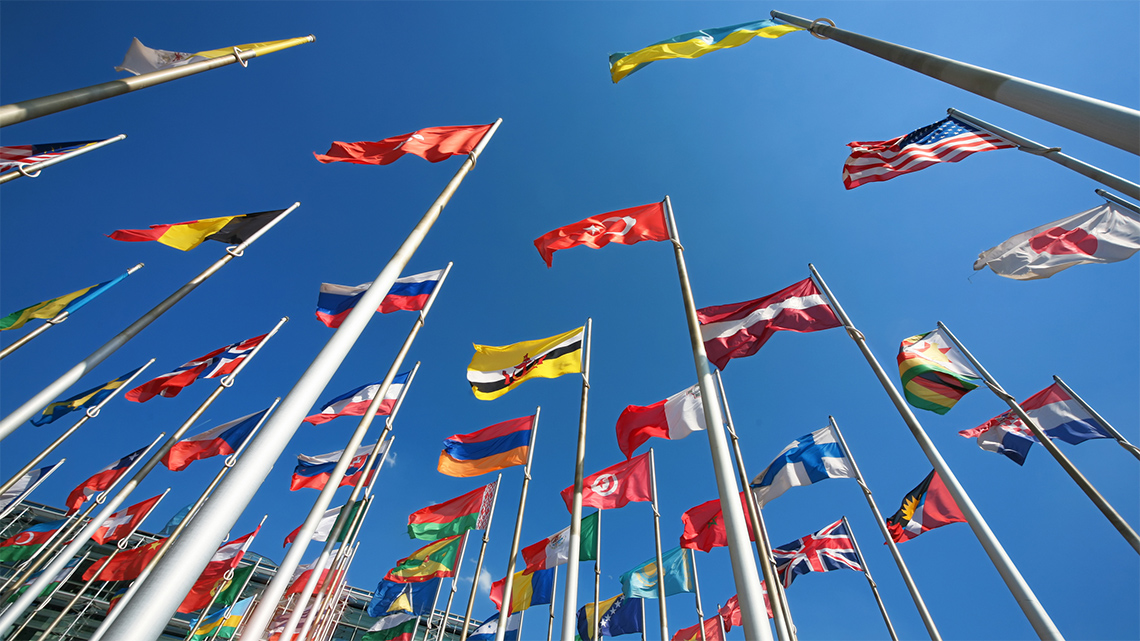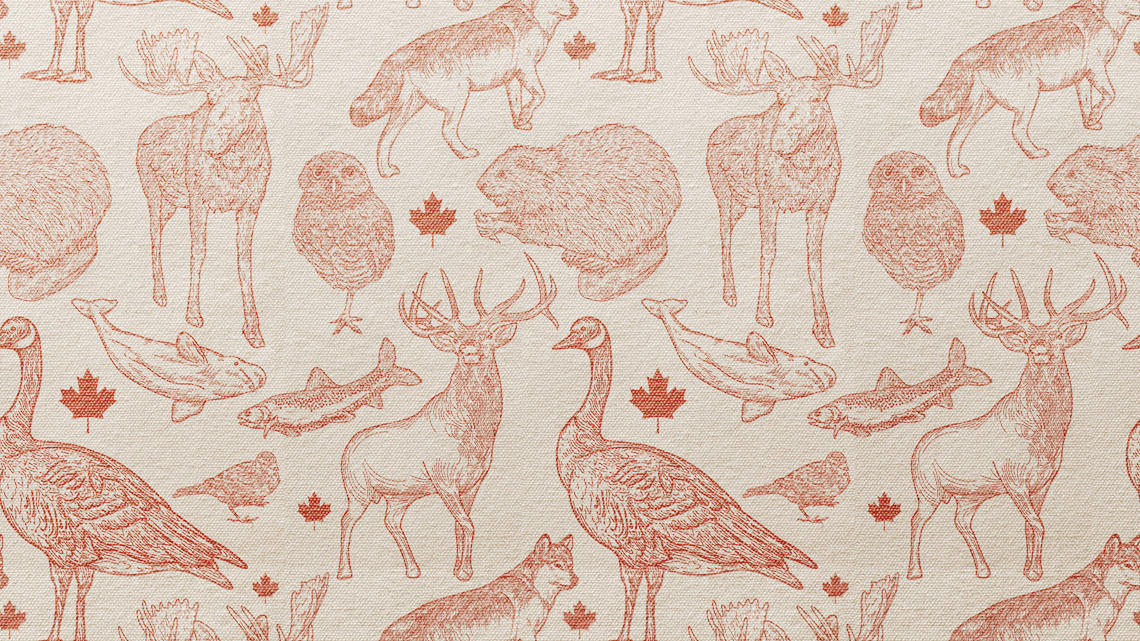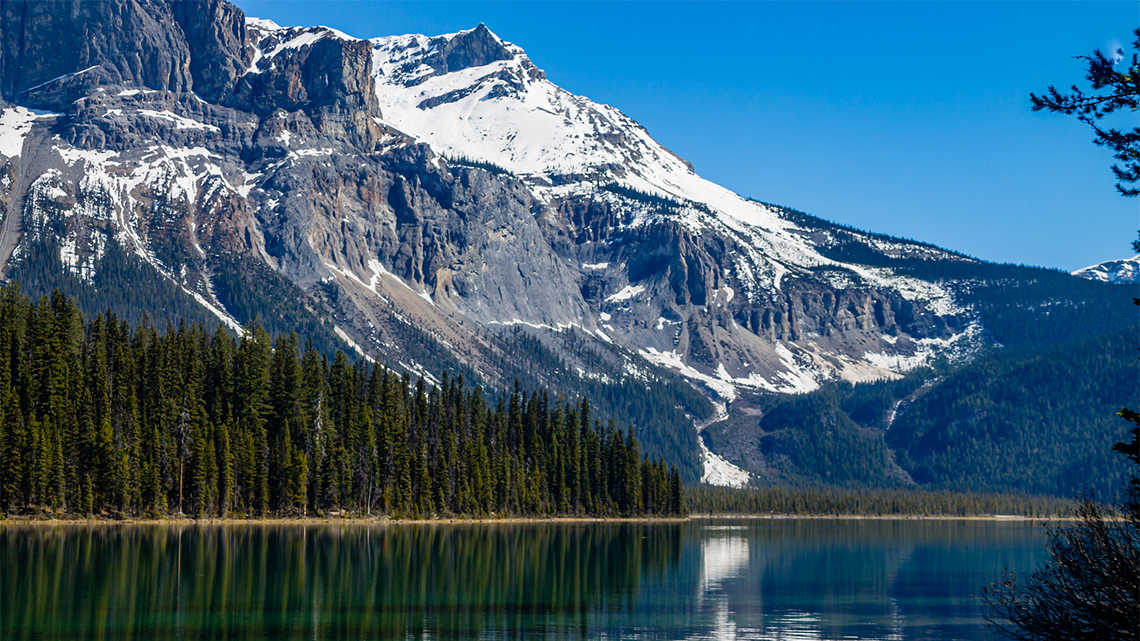Minds On
Canadian identity and culture
In this learning activity, you will be exploring the significant agreements and treaties that established British rule in the colony of Quebec, which eventually led to modern-day Canada.
Explore the following three questions and images. Brainstorm your ideas in a method of your choice.
- What symbolizes Canadian identity?
- How do people around the world describe Canada?
- What symbolizes your personal identity and culture?
Explore the following images and their descriptions as a starting point for your brainstorming.
Action
Task 1: Important documents
After the defeat of the French in the Seven Years War, there were three key documents that outlined how the new British colony of Quebec was to be run in British North America (B.N.A.), now Canada. Throughout this learning activity, it is important to note that Canada was previously referred to as British North America.
Explore the following information about the Treaty of Paris, the Royal Proclamation, and Quebec Act.
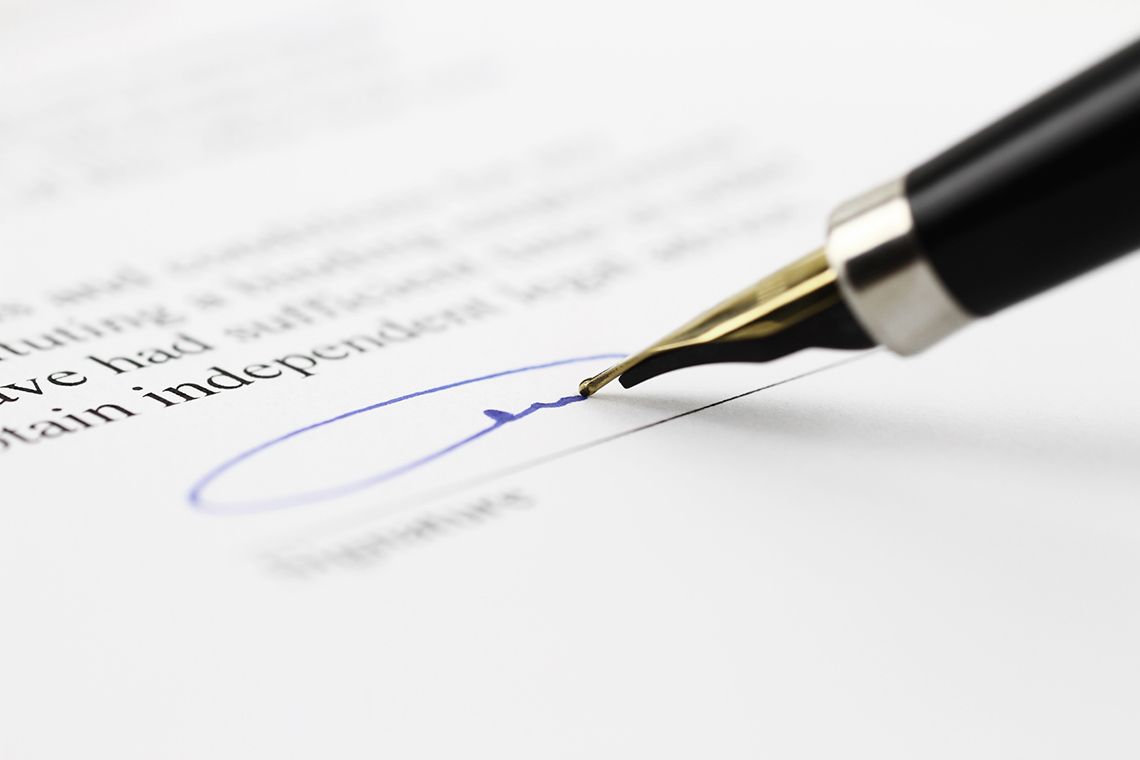
The Treaty of Paris was established in February of 1763 to redistribute lands and put an end to the Seven Years War. It discussed polices that were meant to assimilate the French population to British rule. In the Seven Years W ar, France and Britain were hostile enemies that had Indigenous allies on both sides.
Press Assimilate to access its definition.
The process in which a minority group or culture is forced to resemble another society’s values, behaviours, and beliefs.
According to the Treaty of Paris, the British obtained the French possessions of land (Île-Royale, Quebec, Great Lakes Basin, and the east bank of the Mississippi River). The treaty also gave French Canadians 18 months to emigrate if they did not want to live under the new British government. Britain acquired other lands such as Florida from Spain, and they retained fishing rights in Newfoundland and on the Gulf of the St. Lawrence. The British were supposed to also respect previously established trade agreements with Indigenous Peoples.
While this agreement was quite profitable for the British, it was disastrous for Indigenous groups because it became increasingly more difficult for them to protect their land from the British.
Source: Cornelius, Jaenen J. “Treaty of Paris 1783.” Treaty of Paris 1783 | The Canadian Encyclopedia, 7 Feb. 2006, www.thecanadianencyclopedia.ca/en/article/treaty-of-paris-1783.
Learn more about the Treaty of Paris and its lasting effects on Indigenous communities.
The Royal Proclamation
The Royal Proclamation was issued in October of 1763 by King George III at the end of the Seven Years War and discussed the territories that were given up by the French to the British as a result of the war. The goal of the Royal Proclamation was to establish a government in Canada and drew clear boundaries around the new British province of Quebec, putting a western limit on the Thirteen Colonies. French colonies had to give up their lands to the British, and many First Nations people lived on these lands.
The British were not well liked by First Nations people because their behaviour in fur trading was seen as sneaky. As the British Crown took control of their new lands, they claimed they would treat Indigenous people better.
The Royal Proclamation set out the constitutional structure for the negotiations of treaties with the Indigenous peoples in Canada by creating a huge Indigenous reserve west of the Appalachian Mountains. Colonizers were not allowed to buy any of the lands that belonged to Indigenous peoples, which upset the Americans because they had planned to expand and take this land.
The Royal Proclamation weakened French power by ensuring that all governors of Quebec would be British, all laws were changed to British ones, and Catholics who wanted to continue to work for the government had to take an oath of loyalty to the Protestant British.
The Royal Proclamation had a significant impact on Canada as it contributed to the outbreak of the American Revolution, prohibited the private sale of Indigenous land, and set up a basis for future negotiations of Indigenous treaties. It is still important today and is often examined when there is a dispute about land ownership in Canada.
Source: Hall, Anthony J. “Royal Proclamation of 1763.” Royal Proclamation of 1763 | The Canadian Encyclopedia, 7 Feb. 2006, www.thecanadianencyclopedia.ca/en/article/royal-proclamation-of-1763.
Reflect
What key provisions from the Royal Proclamation of 1763 address the issue of title to Indigenous land?
Press Hint to access possible ways to answer this question.
Let's examine what we've learned about the Royal Proclamation. For each sentence, select the missing word from the drop-down menu..
Quebec Act
In June of 1774, the Quebec Act was established. It revoked the Royal Proclamation and aimed to gain the loyalty of the French-speaking majority in Quebec by restoring French property rights. It enlarged boundaries of the provinces to include Ile d’Anticosti and Iles de la Madeleine on the east, and the Indigenous territory south of the Great Lakes. The Quebec Act guaranteed religious freedom for the Roman Catholics and restored French civil law and British criminal law.

The Quebec Act had a large impact on Canada as it attempted to deal with issues that had been created by the Royal Proclamation. It enabled the Quebec economy to rely on fishers and the traditional fur trade again. New colonizers were unimpressed with the Quebec Act and the privileges it gave to the French population. Many saw this as a way for the British to develop relationships with the French colonizers, in the event they had trouble with American colonies.
The Quebec Act had major implications for Canada. First, it gained the trust of the French people in Canada. Building trust between French-speaking and English-speaking populations was important to prevent rebellions against the British.
The Quebec Act upset Americas because they felt the British were being too lenient to the French and prevented their expansion, eventually leading to the American Revolution. The British were eager to show respect for the strength of First Nations peoples and to prevent any reoccurrence of the bloody wars. Some Indigenous peoples thought the new border, and the presence of the British military to enforce it, might help them protect themselves against colonizers’ encroachments. So, the provisions of the Quebec Act were seen as a minor improvement.
Source: Fred, Glover. “The Quebec Act, 1774 (Plain-Language Summary).” The Canadian Encyclopedia, The Canadian Encyclopedia, 17 Jan. 2020, thecanadianencyclopedia.ca/en/article/the-quebec-act-1774-plain-language-summary.
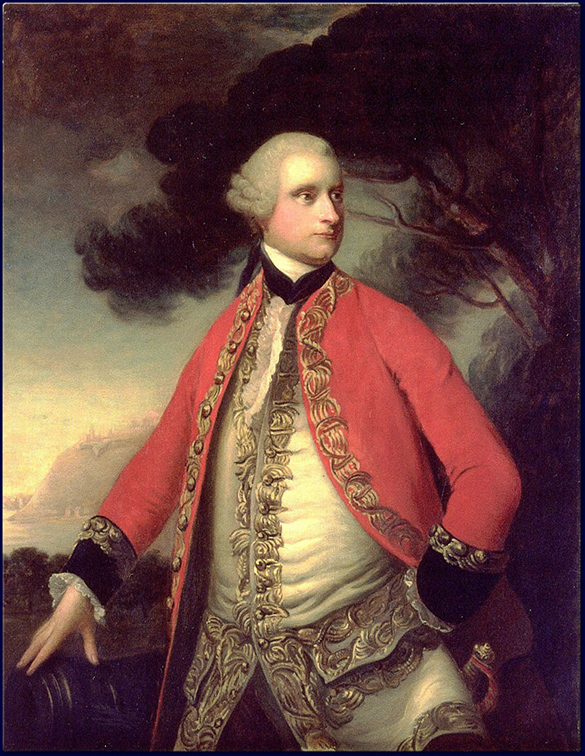
Portrait of General James Murray, the first governor of the Province of Quebec. His job was ended early due to complaints from English merchants. The dispute centred on the application of British law and the creation of an Assembly.
Let’s recap!
Using the information you've examined about the diverse changes under British rule, complete the following sentences. For each sentence, select the missing letter, word, or phrase from the drop-down menu.
Impact on Indigenous communities
Consider the Treaty of Paris, the Royal Proclamation and the Quebec Act documents you explored in the previous section. How did these documents impact Indigenous communities in Canada? Use evidence from your learning to support your answer. Record in a method of your choice.
Think about how each document impacted Indigenous Peoples rights to their own land.
Task 2: Constitution Act
With the English population growing, many new colonizers were not happy living under French laws of Quebec. They wanted to hold their own lands, have their own privileges, and establish a new colony. To reach a compromise, the British Parliament passed the Constitution Act in 1791 (also known as The Canada Act), which divided the colony of Quebec along the Ottawa River into Upper Canada (Ontario) and Lower Canada (Quebec).
In Upper Canada, colonizers were English-speaking and Protestant, and in Lower Canada, colonizers were French-speaking and Catholic.
The Canada Act is famous for giving women the right to own land, and because women were not excluded from the act, any woman who owned land also had the right to vote. By granting Upper Canada a constitution and a separate administration, as well as by favouring British settlement there, Britain took the first steps on the path that eventually led to Confederation.

This map shows the Hudson Bay and Atlantic Ocean surrounding Eastern Canada (present-day Ontario and Quebec). It is labelled and divided with Lower Canada and Upper Canada. Lower Canada is to the east and Upper Canada is to the west.
Based on what you’ve learned so far, and the image of the map of the division of Upper and Lower Canada, can you predict any challenges or conflicts that could have happened with this divide?
Think about how colonizers in each region might have felt about the other and how this would impact their interactions.
Task 3: Modern connection
In 1867, the Constitution Act was revisited and became the foundational document of Confederation when all of the colonies came together and formed Canada. It outlined the structure of the government in Canada and the distribution of powers between central Parliament and provincial legislatures. In 1982, the Constitution Act was patriated. This means that Canada was no longer under the control of Britain and they were entirely independent. However, not all groups involved agreed to this. The government of Quebec did not approve the Act in 1982, which has been debated ever since.
Investigate the following article to learn a little more about the moment when the Queen signed the Constitution Act of 1982.
Press tvo today to access "Thirty Years Ago Tomorrow, Canada Got Its Own Constitution."
Opens in a new tabConstitution Act
The article stated that there was one premier’s signature not on the Constitution. Whose signature was that? Why do you think that is?
Consolidation
Task 1: Multiple choice

In this learning activity, you learned about several key documents that profoundly shaped Canada as we know it today. Solidify your knowledge with the following multiple-choice quiz.
Please select the correct answer.
Task 2: What do you think?
Reflect on what you’ve learned in this learning activity about the formation of present-day Canada. Respond to the following questions in a method of your choice. Use information from your learning to support your answers.
- What impact did the Constitution Act have on French and English Canada?
- Do you think it is fair that Quebec did not sign the Constitution Act in 1982? Why or why not? Do you think signing the Act is what makes you Canadian?
- What impact have the British and French imperial and colonial conflicts had on Indigenous peoples and Canada’s identity?
Reflection
As you read the following descriptions, select the one that best describes your current understanding of the learning in this activity. Press the corresponding button once you have made your choice.
I feel...
Now, expand on your ideas by recording your thoughts using a voice recorder, speech-to-text, or writing tool.
When you review your notes on this learning activity later, reflect on whether you would select a different description based on your further review of the material in this learning activity.
Press 'Discover More' to extend your skills.
Discover MoreThe formation of Canada
Examine maps from before and after the Treaty of Paris and the Royal Proclamation. What differences did you notice? How did the treaty and proclamation change the formation of Canada?
